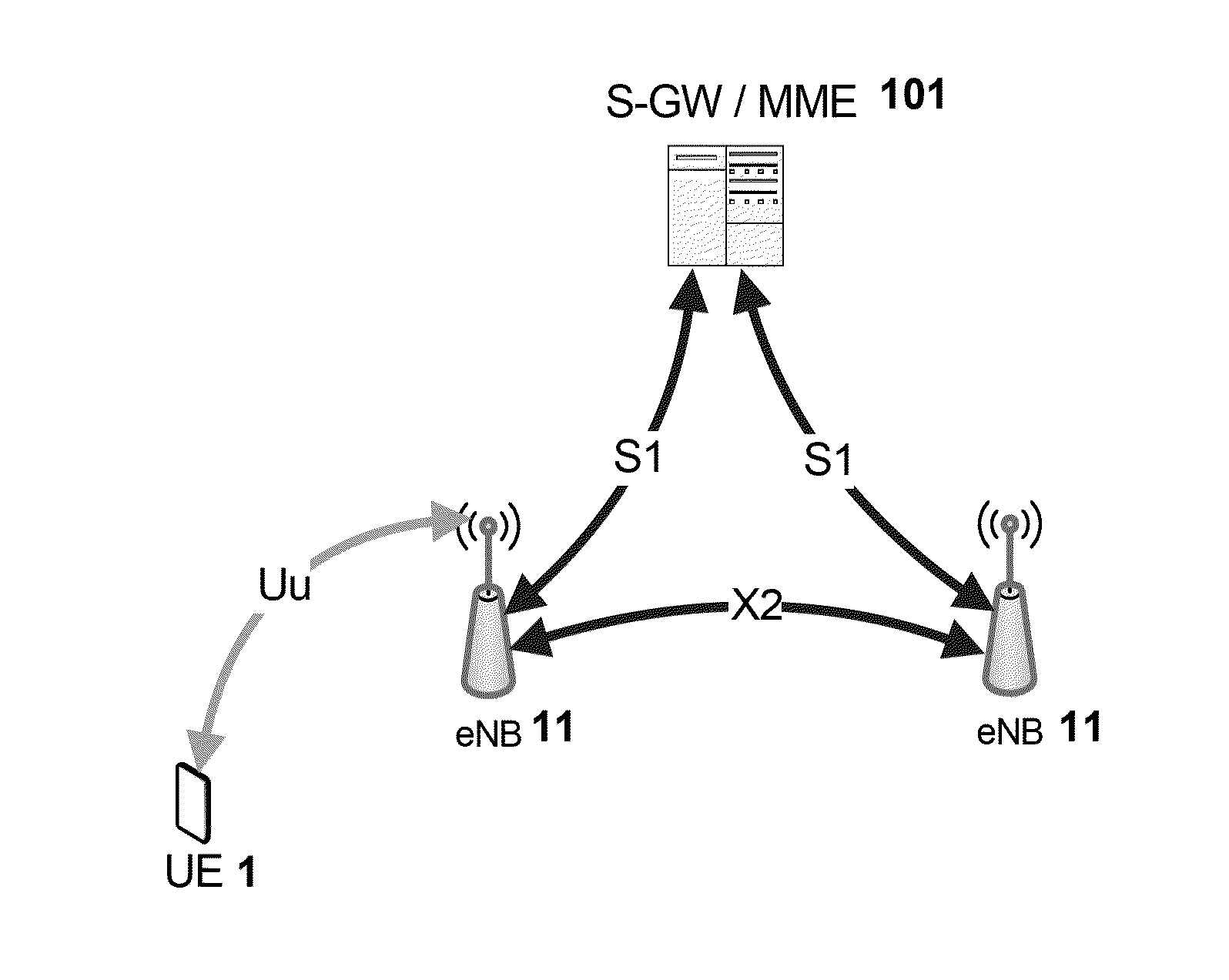Resource requests in small cell networks
- Summary
- Abstract
- Description
- Claims
- Application Information
AI Technical Summary
Benefits of technology
Problems solved by technology
Method used
Image
Examples
first embodiment
[0144]In a first embodiment any UL data may be transmitted via PUSCH on either (or both) serving cells. Resources for scheduling requests, in the form of SR on PUCCH, may also be configured on either, neither or both cells. In this embodiment it is assumed that an SR is triggered when the UE has data to transmit, without the SR necessarily being associated with a specific cell. In a given subframe, if SR is triggered then the following apply:[0145]If there are SR resources on only one of the cells, this cell is used for transmission of SR.[0146]If there are SR resources on both cells, then both cells are used for transmission of SR.[0147]If there are no SR resources on any cell in any subframe, then PRACH is transmitted.[0148]Possible criteria for selection of the cell (or cells) for PRACH transmission—as first cell(s) referred to above—include:[0149]Fixed in specification to be the PCell[0150]Fixed in specification to be the SCell[0151]Cell indicated in a configuration signalled by...
second embodiment
[0176]A second embodiment is like the first embodiment, except that in addition, if the maximum number of SR transmissions according to a counter, is exceeded without cancellation of pending SRs, then PRACH is transmitted. Here, for example, the count may be of SR transmitted on any cell, or alternatively SR transmitted on one specific cell.
[0177]Possible criteria for selection of the cell (or cells) for this PRACH transmission could be:[0178]Fixed in specification to be the PCell[0179]Cell indicated in a configuration signalled by the network.[0180]Expected latency in granting resources[0181]The path loss of the uplink channel for PRACH transmission (which may be related to the power level required for PRACH)[0182]The available data rate for PUSCH on the cell for which resources are requested[0183]System (i.e. cell) bandwidth[0184]UE preference[0185]The configuration of PRACH may be generic or specifically for this case of requesting resources.
[0186]In a variation of either of the ...
third embodiment
[0188]In a third embodiment, which otherwise is like the first embodiment, scheduling requests may be triggered independently for different cells, for example depending on data streams associated with each cell. In other words the terminal can identify a requirement for grant of resources on any of a plurality of cells, corresponding to the “third cells” referred to earlier. Here, the data streams may each correspond to one of the Logical Channels mentioned in the introduction, or alternatively to the Logical Channel Groups.
[0189]In this embodiment, it is assumed that a SR can be triggered with respect to a specific data stream, and it is possible that a data stream is associated with a cell. Thus, in this embodiment the UE does not necessarily select, as the “first cell”, the cell most suitable for transmitting the request but rather uses its selection of “first cell” to indicate a requirement (or preference) with respect to the “third cell”.
[0190]Therefore, in this embodiment, the...
PUM
 Login to View More
Login to View More Abstract
Description
Claims
Application Information
 Login to View More
Login to View More - R&D
- Intellectual Property
- Life Sciences
- Materials
- Tech Scout
- Unparalleled Data Quality
- Higher Quality Content
- 60% Fewer Hallucinations
Browse by: Latest US Patents, China's latest patents, Technical Efficacy Thesaurus, Application Domain, Technology Topic, Popular Technical Reports.
© 2025 PatSnap. All rights reserved.Legal|Privacy policy|Modern Slavery Act Transparency Statement|Sitemap|About US| Contact US: help@patsnap.com



